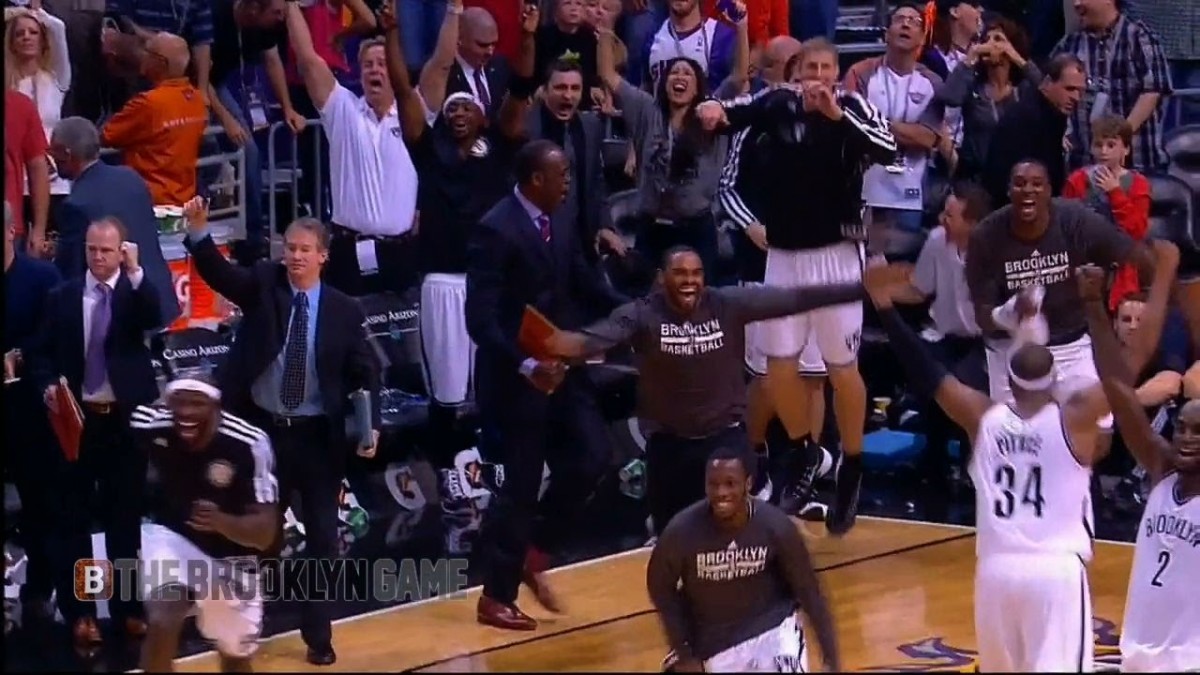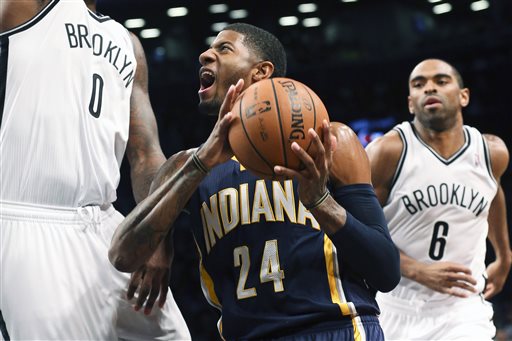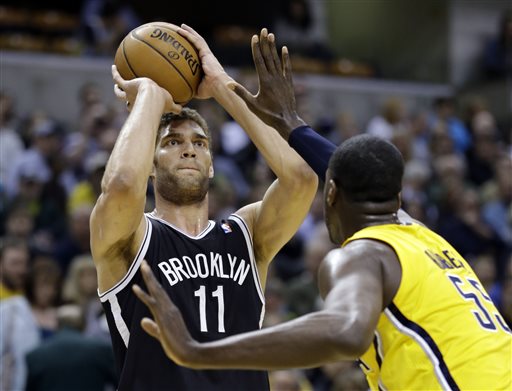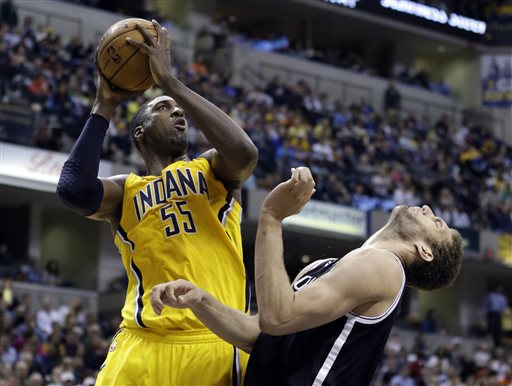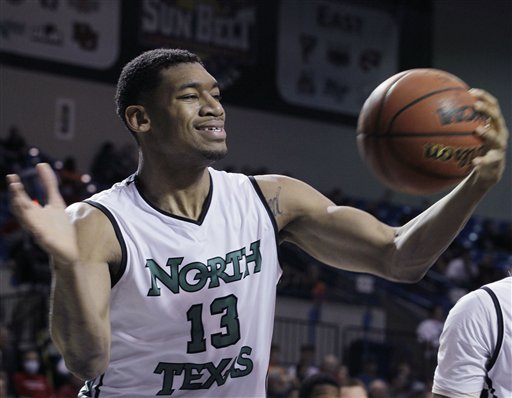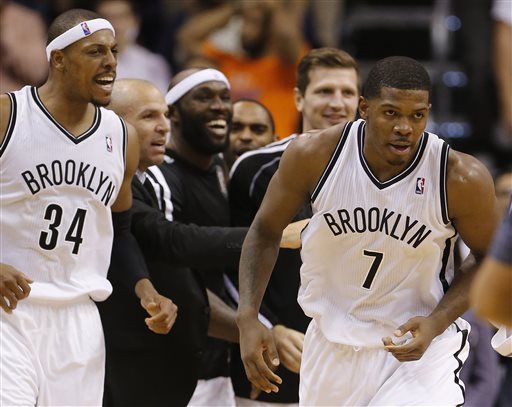
With the Brooklyn Nets slowly climbing towards .500, the team’s had a number of bright spots emerge. Shaun Livingston’s turned into a key cog with Deron Williams injured, Kevin Garnett’s defense has worked wonders at center, and Paul Pierce has done damage as the team’s small-ball power forward.
But through it all, there’s one player that’s been a model of consistency all season, that the Nets have turned to throughout: shooting guard Joe Johnson, the team’s leading scorer and most likely All-Star candidate.
Though he’s had some up-and-down stretches, Johnson is in the midst of yet another solid season. He’s playing slightly less than last season — 34.3 minutes per game, as opposed to 36.7 in 2012-13 — but mostly maintaining the same production. He’s scoring slightly more (17.0 points per 36 minutes, up from 15.9) while using the exact same percentage of team possessions, limiting his already-low turnover rate and hitting more threes per possession than at any point in his career.
A six-time All-Star in Atlanta with the Hawks, Johnson is in the midst of one of his best stretches in a Nets uniform. Through the team’s last five games, Johnson has averaged 24.4 points per game, shooting 51.1 percent from the field and 46.4 percent from three-point range. He scored 22 points in the first quarter against the Miami Heat, and 26 in the first half against the Hawks in the team’s foray into London.
He’s also, you know, hit two game-winning shots.
Johnson has three major competitors for the last guard spot: the Orlando Magic’s Arron Afflalo, the Toronto Raptors’s DeMar DeRozan, and Indiana Pacers sparkplug Lance Stephenson. Each has their own case for the spot.
Afflalo has the best statistical profile of the four, averaging 20.8 points, 4.4 rebounds, and 3.9 assists in 37.5 minutes per game, and his PER of 18.4 leads the quartet. But the Magic sit at 10-29, one stop above the Eastern Conference cellar, and league voters rarely choose someone from a team that’s struggled that much.
DeRozan has the biggest scoring numbers in the group and plays for the Atlantic Division-leading Toronto Raptors, but is the least efficient shooter of the bunch: he scores over 20 points per 36 minutes, but shoots less than 30 percent from beyond the arc. His effective field goal percentage (which accounts for the value of a three-pointer) and true shooting percentage (which accounts for the value of free throw shooting) trail the other three considerably.
And then there’s Stephenson, the quirky, erratic shooting guard from Brooklyn that’s made a name for himself as a game-changer with his brash, in-your-face style of play. Stephenson is the most effective playmaker of the four, averaging 5.3 assists per 36 minutes, and is a key cog in Indiana’s NBA-best defense alongside Roy Hibbert and Paul George (two no-brainer choices for the All-Star Game).
From an objective viewpoint, I’d like to see Stephenson in the All-Star Game, because he’s not only productive, but his particular unique brand of showmanship seems made for a game where players show off. But Johnson, despite his reputation, has a few tricks up his sleeve too.
Paul Pierce knows.
Here’s a statistical comparison of the four, courtesy of Basketball-Reference. What do you think?
[gravityform id=”42″ name=”JJASG” title=”false” description=”false”]

